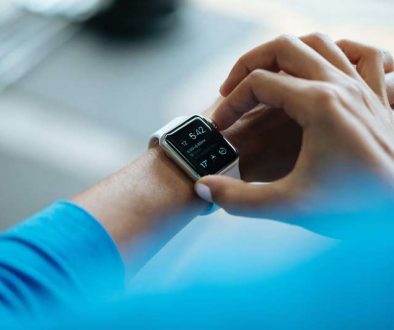How to Avoid Sitting Too Much and Moving Too Little
Partly due to rising health costs and the awareness that sitting for long periods has a negative effect on health, there is some significant motivation to get workers out of their chairs and on their feet. In addition to the stated health benefits, people tend to be more productive when they work on their feet.
Even the American Medical Association (AMA) recognizes that prolonged sitting is bad for you. The AMA recently adopted a new policy on sitting at work. It is now urging employers and others to make alternatives to sitting available to workers. AMA board member Dr. Patrice Harris said, “[giving] employees alternatives to sitting all day will help to create a healthier workforce.”
A Nation of Obese Sitters
So, is sitting a healthy thing to do? It would appear not! At least not for long periods of time. In spite of significant evidence, the plain fact is we have become a nation of sitters. We sit at work, sit on the way to and from work, sit while we eat, and sit during the evening while watching TV. Among some of the other negative aspects of prolonged sitting, there is a correlation between the amount of time spent seated and the development of obesity. It’s really no wonder we are becoming a nation of obese sitters.
In addition to its recent policy on sitting at work, the AMA just saw fit to make obesity a disease, rather than a lifestyle choice. Interesting call! On a personal note, I’ve considered myself to be far too short for my weight most of my life. However, I don’t consider that I have a disease; never have. Rather, I credit my own situation to more calories going in than going out. Labeling obesity as a “disease” sort of takes the personal-responsibility part out of the equation.
So, back to the sitting thing. There is ample evidence that sitting, whether at work or at home watching TV, has a negative effect. Studies show that prolonged sitting leads to an increase in childhood obesity, diabetes and even attention problems.
An interesting study was published a few years ago in the Archives of Internal Medicine. The study was conducted at Duke University and looked at the impact of obesity on worker’s compensation costs. Workers with a body mass index (BMI) greater than 40, filed twice as many worker’s compensation claims, had seven times higher medical costs, and lost 13 times more time from work when compared to non-obese workers.
Tools to Help Fight the “Sitting” Epidemic
In an attempt to curb the sitting epidemic, the American Heart Association (AHA) is promoting a new device. It’s actually a smartphone app, Hotseat. It is designed to do one thing: Get people out of their seats for a few minutes throughout the day.
I’m not in the habit of promoting products, but this one has me intrigued. A pilot study by the AHA found that 71 percent of the app users took more breaks from sitting during the workday. Additionally, nearly 87 percent of the workers said that using the app made them more aware of the time they spend sitting.
Those using Hotseat set up an individual break profile, one that they feel comfortable and capable of doing. They then set up the number of breaks they want to take and when they want to take them. Each break is approximately two minutes in length. Rather than a fixed schedule, the app syncs the breaks with the worker’s calendar. Nifty use of a smartphone. Fran Melmed, the creator of the Hotseat app, says it is designed to combat “sitting disease.”
One other thing that seems to help is the treadmill desk. I wrote about this in an earlier article, but it’s important to re-emphasize, because it does get people out of their chairs. The treadmill desk consists of a treadmill that is set up as a standing workstation.
Perhaps the most important thing you can do is move more. Don’t spend too long in any one position. Take the stairs rather than the elevator. Park far enough away from the store that you are forced to walk a bit. Take walks after lunch and dinner.
I’m always amused when a worker who has injured his/her back is given a temporary work assignment that involves seated work. The opportunity to sit at work is considered to be “light work.” In reality, it comes with its own price.
I’m personally pleased to see the interest in the negative effects of sitting. Prolonged sitting leads to a variety of health problems, from obesity to back pain to postural fatigue. It behooves all of us, doctors and patients alike, to move around more.
Paul Hooper, DC, MPH, MS, a 1975 graduate of Cleveland Chiropractic College – Kansas City, is the clinical communications editor for Comprehensive Industrial Disability Management Corp. He can be reached via e-mail with questions and comments at paul.hooper@cidmcorp.com.


